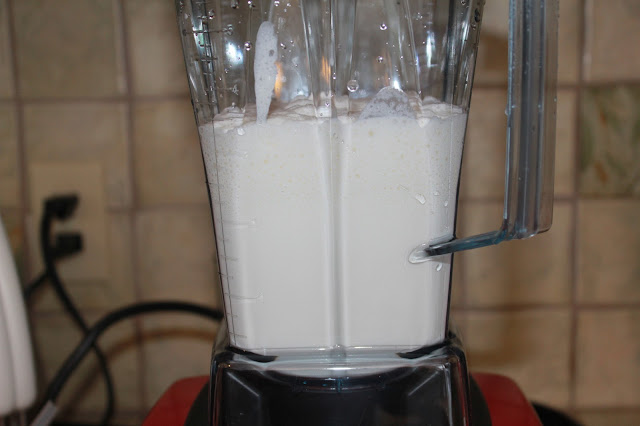 Little M likes pizza. Well, we all like pizza in our family, but Little M really, really likes pizza! So I make homemade pizza using sourdough crust, fresh veggies for toppings, and a pizza stone to make it crispy.
Little M likes pizza. Well, we all like pizza in our family, but Little M really, really likes pizza! So I make homemade pizza using sourdough crust, fresh veggies for toppings, and a pizza stone to make it crispy.If you haven't read any info about sourdough, I will give you a short explanation:
The big deal about sourdough is that the "starter" is a colony of wild yeast and lactobacilli (good bacteria, as found in yogurt) and when you mix the starter with your flour and allow it to ferment, the bacteria eats (breaks down) the gluten, making the flour easier on the digestive system.
So, sourdough pizza is nice and easy on the belly. That's a good thing for kids, and for grown ups too.
Plus, freshly made pizza is yummy! We make 3 at a time, each of us customizing our toppings. And then we all have leftovers for lunches.
Okay, here's the recipe...
Pizza Dough
Ingredients
1 1/2 C sourdough starter
1 1/2 C whole wheat or unbleached white flour
3/4 tsp sea salt
2 tbs melted coconut oil
Method
1) Mix ingredients in a bowl and when a ball begins to form, pick it up and kneed it for 5 mins.
2) Rub a bit of coconut oil in the bowl and on the dough ball to keep it from drying out and/or sticking to the bowl.
3) With the dough ball inside the bowl, cover with clean dish towel and leave in a warm place (in the oven with the oven light on for example) for 3-4 hours.
Note: Traditionally olive oil is used in pizza dough. I chose to use coconut oil because olive oil denatures at the high temperature needed to cook pizza while coconut oil remains stable.
 | |
| Here is my dough ready to be divided in 3 equal pieces to make 3 pizzas. |
Making Pizza
1) Preheat oven (and pizza stone if you have one) at 500 F.
Warning: Never put a cold pizza stone into a hot oven, it may crack.
2) Chop desired toppings, grate cheese, make or open a can of pizza sauce.
3) Place dough ball on floured surface and using a large knife, cut into 3 equal pieces.
We find it fun that we each get to make our own pizza!
4) Taking one piece at a time, roll into a round ball, then lay on floured surface and using a rolling pin roll out to desired thickness. (I like a thin crust.)
Mr. J doesn't use a rolling pin. He likes to throw it in the air and catch it on his finger tips. He ends up ripping holes in it and it looks pretty bad when he's done... but I don't say anything since I don't have to eat it (lol).
5) Because I use a pizza stone, I use a peel (large paddle) to slide the pizza into the oven. I sprinkle corn meal on the peel to prevent sticking and then lay the rolled-out dough on it.
6) Top the dough with pizza sauce, toppings of choice, and cheese if using.
I like to use basil leaves, spinach, peppers, mushrooms, onions, and almost any other veggie I have on hand. I also like pineapple on top.
I usually only use a small amount of cheese. I prefer cheddar because it's more flavourful, I find a little goes a long way. It looks like a lot in the photo, but that is mostly yellow and orange peppers you are seeing on top!
(Little M and Mr. J like meat like hamburg and bacon with their veggie toppings.)
7) Slide the pizza off the peel and onto the hot stone. Bake for 8 mins. Then put the next pizza in until everyone's is cooked.
Yum! Dinner time....
 |
| This one is mine, hot out of the oven. |


































